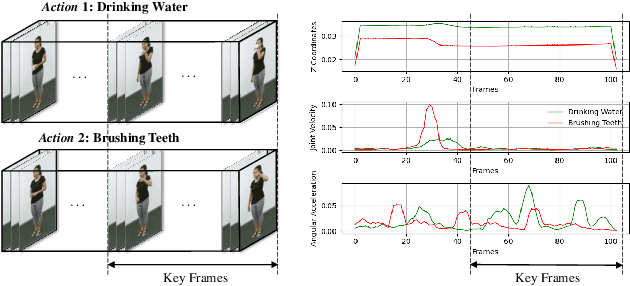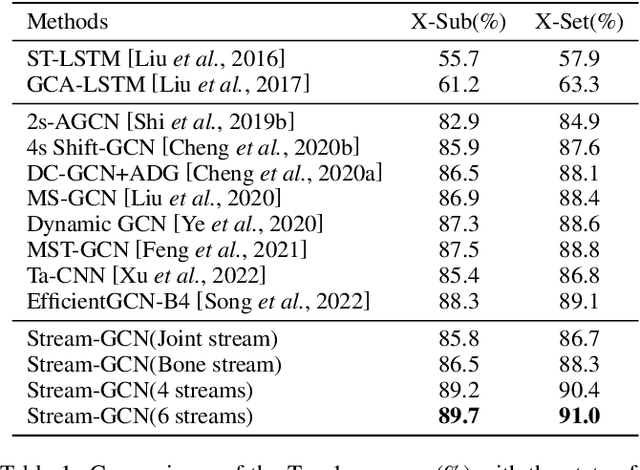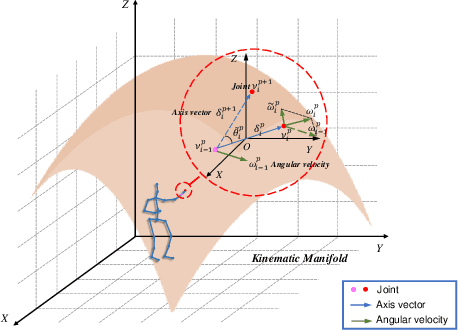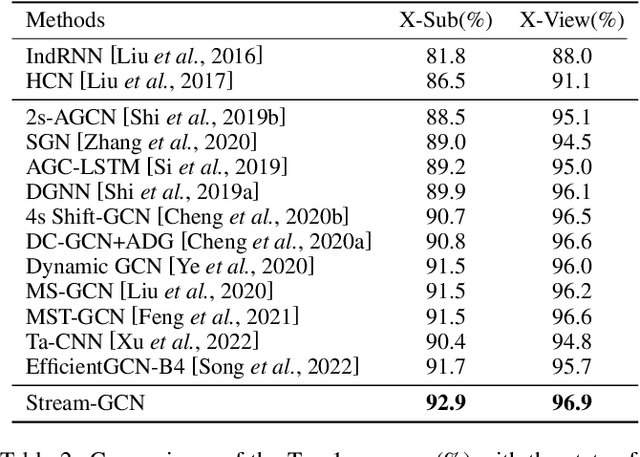Yuheng Yang
Skeleton-based Action Recognition with Non-linear Dependency Modeling and Hilbert-Schmidt Independence Criterion
Dec 25, 2024



Abstract:Human skeleton-based action recognition has long been an indispensable aspect of artificial intelligence. Current state-of-the-art methods tend to consider only the dependencies between connected skeletal joints, limiting their ability to capture non-linear dependencies between physically distant joints. Moreover, most existing approaches distinguish action classes by estimating the probability density of motion representations, yet the high-dimensional nature of human motions invokes inherent difficulties in accomplishing such measurements. In this paper, we seek to tackle these challenges from two directions: (1) We propose a novel dependency refinement approach that explicitly models dependencies between any pair of joints, effectively transcending the limitations imposed by joint distance. (2) We further propose a framework that utilizes the Hilbert-Schmidt Independence Criterion to differentiate action classes without being affected by data dimensionality, and mathematically derive learning objectives guaranteeing precise recognition. Empirically, our approach sets the state-of-the-art performance on NTU RGB+D, NTU RGB+D 120, and Northwestern-UCLA datasets.
Action Recognition with Multi-stream Motion Modeling and Mutual Information Maximization
Jun 13, 2023



Abstract:Action recognition has long been a fundamental and intriguing problem in artificial intelligence. The task is challenging due to the high dimensionality nature of an action, as well as the subtle motion details to be considered. Current state-of-the-art approaches typically learn from articulated motion sequences in the straightforward 3D Euclidean space. However, the vanilla Euclidean space is not efficient for modeling important motion characteristics such as the joint-wise angular acceleration, which reveals the driving force behind the motion. Moreover, current methods typically attend to each channel equally and lack theoretical constrains on extracting task-relevant features from the input. In this paper, we seek to tackle these challenges from three aspects: (1) We propose to incorporate an acceleration representation, explicitly modeling the higher-order variations in motion. (2) We introduce a novel Stream-GCN network equipped with multi-stream components and channel attention, where different representations (i.e., streams) supplement each other towards a more precise action recognition while attention capitalizes on those important channels. (3) We explore feature-level supervision for maximizing the extraction of task-relevant information and formulate this into a mutual information loss. Empirically, our approach sets the new state-of-the-art performance on three benchmark datasets, NTU RGB+D, NTU RGB+D 120, and NW-UCLA. Our code is anonymously released at https://github.com/ActionR-Group/Stream-GCN, hoping to inspire the community.
 Add to Chrome
Add to Chrome Add to Firefox
Add to Firefox Add to Edge
Add to Edge